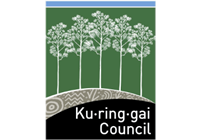Industry sector data identifies the industries in which the residents of an area work either within the residing area or elsewhere. Comparing the industry sectors in which Ku-ring-gai Council area residents are employed in the industry sectors that are located in Ku-ring-gai Council area, indicates whether an economy draws on the skills offered by its own residents, or on a different set of skills imported from elsewhere in the region.
Industry sector statistics in Ku-ring-gai Council area are influenced by a range of factors including:
- The economic base and employment opportunities available within commuting distance;
- The educational levels of the local population; and
- The working and social aspirations of the local population.
Industry sector data should be viewed in conjunction with Residents place of work.
Data source
Australian Bureau of Statistics (ABS) – Census 2016 and 2021 – by usual residence
Current benchmark:
Sex:
| Resident workers industry of employment | |||||||||
|---|---|---|---|---|---|---|---|---|---|
| Ku-ring-gai Council area - Persons | 2021 | 2016 | Change | ||||||
| Industry (Click rows to view sub-categories) | Number | % | New South Wales | Number | % | New South Wales | 2016 - 2021 | ||
| Agriculture, Forestry and Fishing | 222 | 0.4 | 2.0 | 178 | 0.3 | 2.1 | +44 | ||
| Mining | 151 | 0.3 | 1.0 | 170 | 0.3 | 0.9 | -19 | ||
| Manufacturing | 1,975 | 3.4 | 5.5 | 2,008 | 3.7 | 5.8 | -33 | ||
| Electricity, Gas, Water and Waste Services | 360 | 0.6 | 1.0 | 286 | 0.5 | 0.9 | +74 | ||
| Construction | 2,717 | 4.6 | 8.6 | 2,392 | 4.4 | 8.4 | +325 | ||
| Wholesale Trade | 2,300 | 3.9 | 2.8 | 2,357 | 4.3 | 3.1 | -57 | ||
| Retail Trade | 4,314 | 7.4 | 9.0 | 4,425 | 8.1 | 9.7 | -111 | ||
| Accommodation and Food Services | 2,424 | 4.1 | 6.2 | 2,632 | 4.8 | 7.1 | -208 | ||
| Transport, Postal and Warehousing | 1,279 | 2.2 | 4.6 | 1,214 | 2.2 | 4.7 | +65 | ||
| Information Media and Telecommunications | 1,852 | 3.2 | 1.8 | 2,120 | 3.9 | 2.2 | -268 | ||
| Financial and Insurance Services | 6,706 | 11.4 | 5.3 | 5,653 | 10.3 | 4.9 | +1,053 | ||
| Rental, Hiring and Real Estate Services | 1,661 | 2.8 | 1.7 | 1,424 | 2.6 | 1.8 | +237 | ||
| Professional, Scientific and Technical Services | 10,268 | 17.5 | 8.9 | 9,341 | 17.0 | 8.1 | +927 | ||
| Administrative and Support Services | 1,360 | 2.3 | 3.2 | 1,451 | 2.6 | 3.5 | -91 | ||
| Public Administration and Safety | 2,204 | 3.8 | 6.1 | 2,006 | 3.7 | 6.0 | +198 | ||
| Education and Training | 5,854 | 10.0 | 8.7 | 5,449 | 9.9 | 8.4 | +405 | ||
| Health Care and Social Assistance | 8,292 | 14.2 | 14.4 | 7,198 | 13.1 | 12.5 | +1,094 | ||
| Arts and Recreation Services | 809 | 1.4 | 1.4 | 836 | 1.5 | 1.5 | -27 | ||
| Other Services | 1,409 | 2.4 | 3.4 | 1,500 | 2.7 | 3.7 | -91 | ||
| Industry not classified | 2,424 | 4.1 | 4.6 | 2,274 | 4.1 | 4.7 | +150 | ||
| Total Persons | 58,581 | 100.0 | 100.0 | 54,914 | 100.0 | 100.0 | +3,667 | ||
Source: Australian Bureau of Statistics, Census of Population and Housing 2016 and 2021. Compiled and presented by .id (informed decisions) | |||||||||


Dominant groups
Analysis of the jobs held by the resident workforce in Ku-ring-gai Council area in 2021shows the three most popular industry sectors were:
- Professional, Scientific and Technical Services (10,268 people or 17.5%)
- Health Care and Social Assistance (8,292 people or 14.2%)
- Financial and Insurance Services (6,706 people or 11.4%)
In combination these three industries employed 25,266 people in total or 43.1% of the total resident workforce.
In comparison, New South Wales employed 8.9% in Professional, Scientific and Technical Services; 14.4% in Health Care and Social Assistance and 5.3% in Financial and Insurance Services.
The major differences between the jobs held by the resident workforce of Ku-ring-gai Council area and New South Wales were:
- A larger percentage of resident workforce employed in Professional, Scientific and Technical Services (17.5% compared to 8.9%)
- A larger percentage of resident workforce employed in Financial and Insurance Services (11.4% compared to 5.3%)
- A smaller percentage of resident workforce employed in Construction (4.6% compared to 8.6%)
- A smaller percentage of resident workforce employed in Transport, Postal and Warehousing (2.2% compared to 4.6%)
Emerging groups
The largest changes in the jobs held by the resident workforce between 2016 and 2021 in Ku-ring-gai Council area were for those employed in:
- Health Care and Social Assistance (+1,094 resident workforce)
- Financial and Insurance Services (+1,053 resident workforce)
- Professional, Scientific and Technical Services (+927 resident workforce)
- Education and Training (+405 resident workforce)
